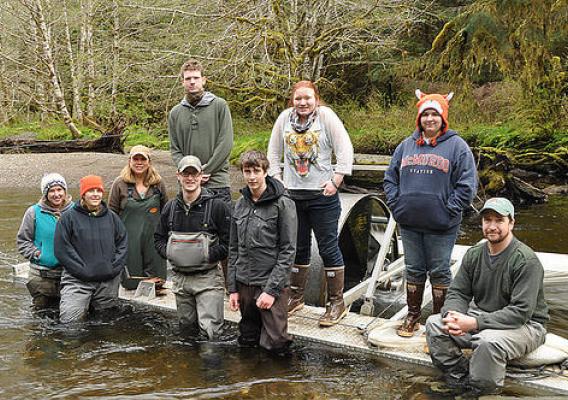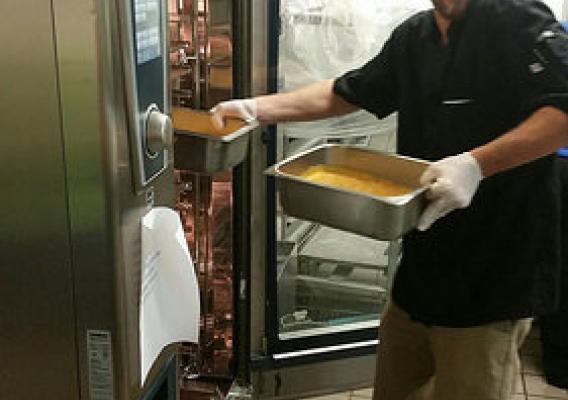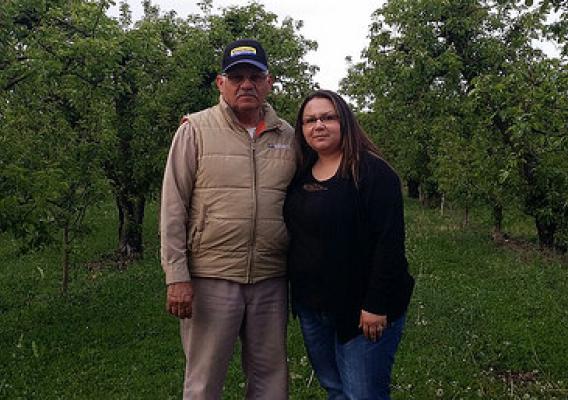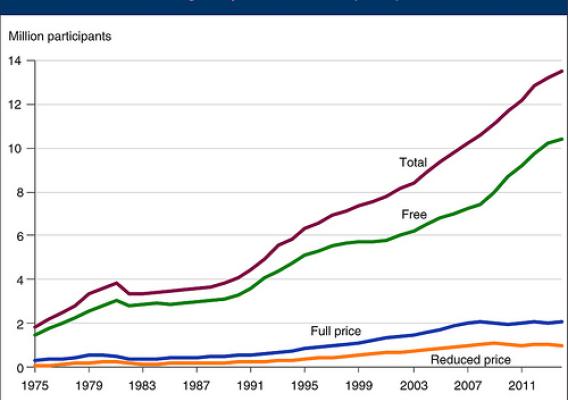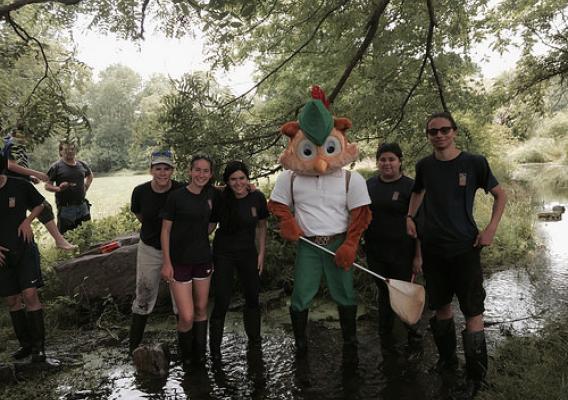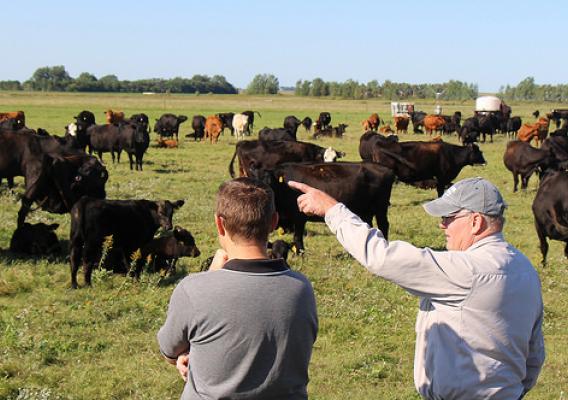Sometimes called the “most important meal of the day” for school-aged children, breakfast is available at nearly 90,000 schools across the country courtesy of USDA’s School Breakfast Program. On an average school day in fiscal 2014, some 13.5 million students participated. The Economic Research Service (ERS) illustrates the growth of the program in a new entry in its popular daily “Charts of Note” series. As the chart indicates, participation has more than doubled since 1996.
The School Breakfast Program, permanently authorized in 1975, is newer than the arguably-more-renowned National School Lunch Program, established nearly three decades earlier in 1946. The statistics tell an interesting story. Throughout the history of the School Breakfast Program, the number of participating children was considerably smaller than in the National School Lunch Program and is still less than half. Nevertheless, as the breakfast program funding increased—and grants to schools to help start up the program became more available—the number of schools participating in the breakfast program has steadily grown, making it available to more students.

